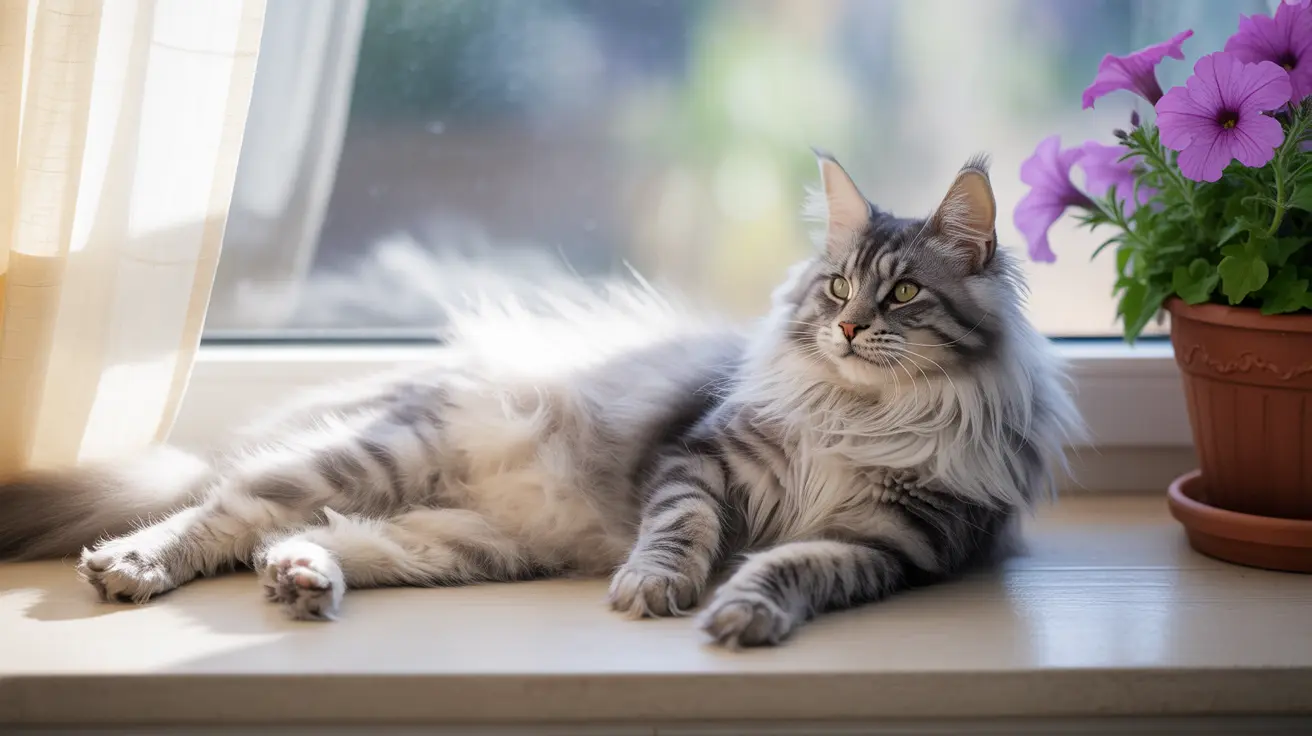Understanding Seasonal Shedding in Cats
Cats have evolved to develop a natural shedding cycle that helps them adapt to changing seasons. This process is primarily triggered by two environmental factors: increasing daylight hours and rising temperatures.
During spring and early summer, cats begin shedding their thick winter coats to prepare for warmer weather. This natural molting process typically lasts six to eight weeks and helps cats regulate their body temperature more effectively during hot summer months.
The Science Behind Summer Shedding
Light and Hormonal Changes
The increasing daylight hours of summer trigger hormonal changes in cats that signal their bodies to shed old fur. This process is controlled by the cat's endocrine system, which responds to natural light cycles to regulate the molting process.
Temperature Adaptation
As temperatures rise, cats naturally shed their dense undercoat to allow for better heat dissipation. This biological response helps them stay cool and comfortable during the hottest months of the year.
Indoor vs. Outdoor Cats: Different Shedding Patterns
While all cats experience some degree of seasonal shedding, the pattern and intensity can vary significantly between indoor and outdoor cats:
Outdoor Cats
These cats typically show more dramatic seasonal shedding patterns, with notable increases during spring and summer. Their bodies respond directly to natural environmental cues like changing daylight and temperature.
Indoor Cats
While indoor cats still shed more in summer, their shedding patterns tend to be more moderate and consistent throughout the year due to controlled indoor temperatures and artificial lighting.
Managing Summer Shedding
Essential Grooming Tips
Regular grooming becomes especially important during peak shedding season. Daily brushing helps remove loose fur before it ends up on your furniture and can prevent uncomfortable hairballs from forming.
Tools and Techniques
- Deshedding tools for removing loose undercoat
- Slicker brushes for everyday grooming
- Combs for detangling and removing loose fur
- Grooming mitts for cats who don't tolerate traditional brushes
When to Be Concerned
While increased summer shedding is normal, certain signs may indicate a health issue:
- Bare patches or significant hair loss
- Skin irritation or excessive scratching
- Unusual grooming behaviors
- Lethargy or loss of appetite
If you notice any of these symptoms, consult with your veterinarian to rule out underlying health concerns.
Frequently Asked Questions
Why do cats shed more in the summer compared to other seasons?
Cats shed more in summer due to increasing daylight hours and rising temperatures, which trigger hormonal changes that prompt them to lose their thick winter coat in favor of a lighter summer coat.
How does indoor vs. outdoor living affect a cat's summer shedding patterns?
Outdoor cats typically experience more dramatic seasonal shedding, while indoor cats tend to shed more consistently year-round due to controlled environmental conditions, though they may still show some increase during summer months.
What are the best grooming techniques to manage increased cat shedding in summer?
Daily brushing with appropriate tools, regular bathing if tolerated, and maintaining a clean environment are the most effective ways to manage summer shedding. Using a combination of brushes and combs designed for your cat's coat type will yield the best results.
Which cat breeds shed the most during the summer months and why?
Double-coated breeds like Maine Coons, Persians, and Norwegian Forest Cats typically shed the most during summer months because they have more fur to lose when transitioning from their winter to summer coats.
Can excessive summer shedding in cats indicate health problems or require veterinary attention?
While increased summer shedding is normal, excessive hair loss, bare patches, skin irritation, or changes in behavior warrant veterinary attention as they may indicate underlying health issues such as allergies, stress, or hormonal imbalances.






